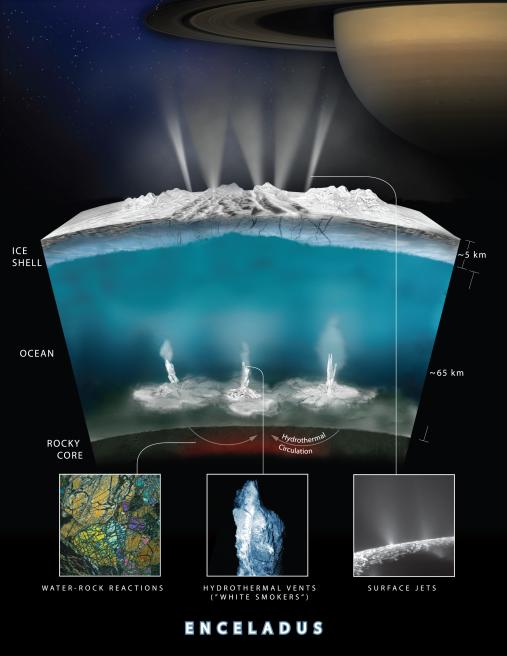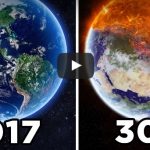Saturn‘s ocean-bearing moon Enceladus shoots ice plumes into space contain hydrogen from hydrothermal vents. Some scientists believe that this environment led to the rise of life on Earth, according to research published on Thursday, April 13, 2017.
According to the findings in the journal Science, the discovery is evidence that Enceladus is the only place beyond Earth where scientists have found direct evidence of a possible energy source for life.
The birth place for the appearance of microbial life on Earth more than four billion years ago, could have been in similar conditions, in which hot rocks meet ocean water.
“If correct, this observation has fundamental implications for the possibility of life on Enceladus,” geochemist Jeffrey Seewald, of the Woods Hole Oceanographic Institution in Massachusetts, wrote in a related commentary in Science.
NASA’s Cassini spacecraft was used to make this discovery and in in September, the Cassini will end a 13-year mission exploring Saturn and its cortege of 62 known moons.
In October 2015, when Cassini made its last pass through Enceladus’ plumes, the detection of molecular hydrogen occurred, when the spacecraft skimmed 30 miles (49 km) above the moon’s southern pole taking samples.
Earlier in 2005, Cassini had found Enceladus’ springs, which shoot several miles into space. A portion of the material falls back onto the surface as a crisp layer of ice, while a significant part of the rest accumulates into a corona of ice dust that feeds one of Saturn’s rings.
A decade later, scientists measuring the moon’s slightly wobbly orbit around Saturn found that it holds a vast ocean buried 19- to 25 miles (30- to 40 km) beneath its icy shell. The ocean is believed to be the geysers’ source.
Several moons orbiting Jupiter and Saturn are known to contain underground oceans, but Enceladus is the only one where scientists have found proof of an energy source for life.

However, lead author Hunter Waite, with the Southwest Research Institute in San Antonio, Texas, puts out a disclaimer saying, “We’re moving towards Enceladus’s ocean being habitable, but we’re not making any claims at this point about it being inhabited.”
He added, “the next time we go back … you’re going to take something that not only picks up on the habitability story, but it starts looking for evidence for life.”
Enceladus’ isze is a diameter of 310 miles (500 km) and it is one of Saturn‘s innermost moons. The heat needed to keep its ocean from freezing is said to come from tidal forces exerted by Saturn and a neighboring larger moon, Dione.
Here’s is short video :


